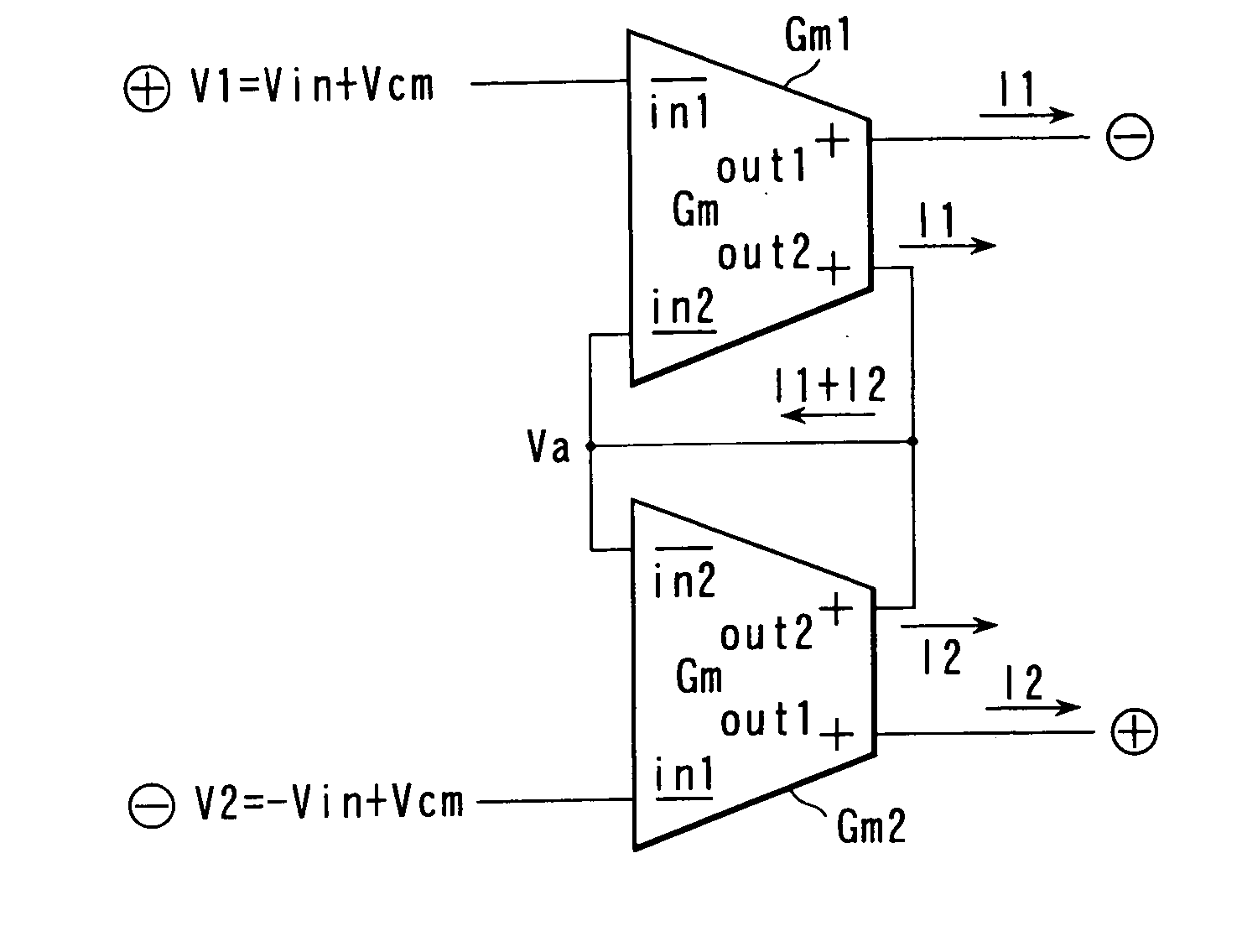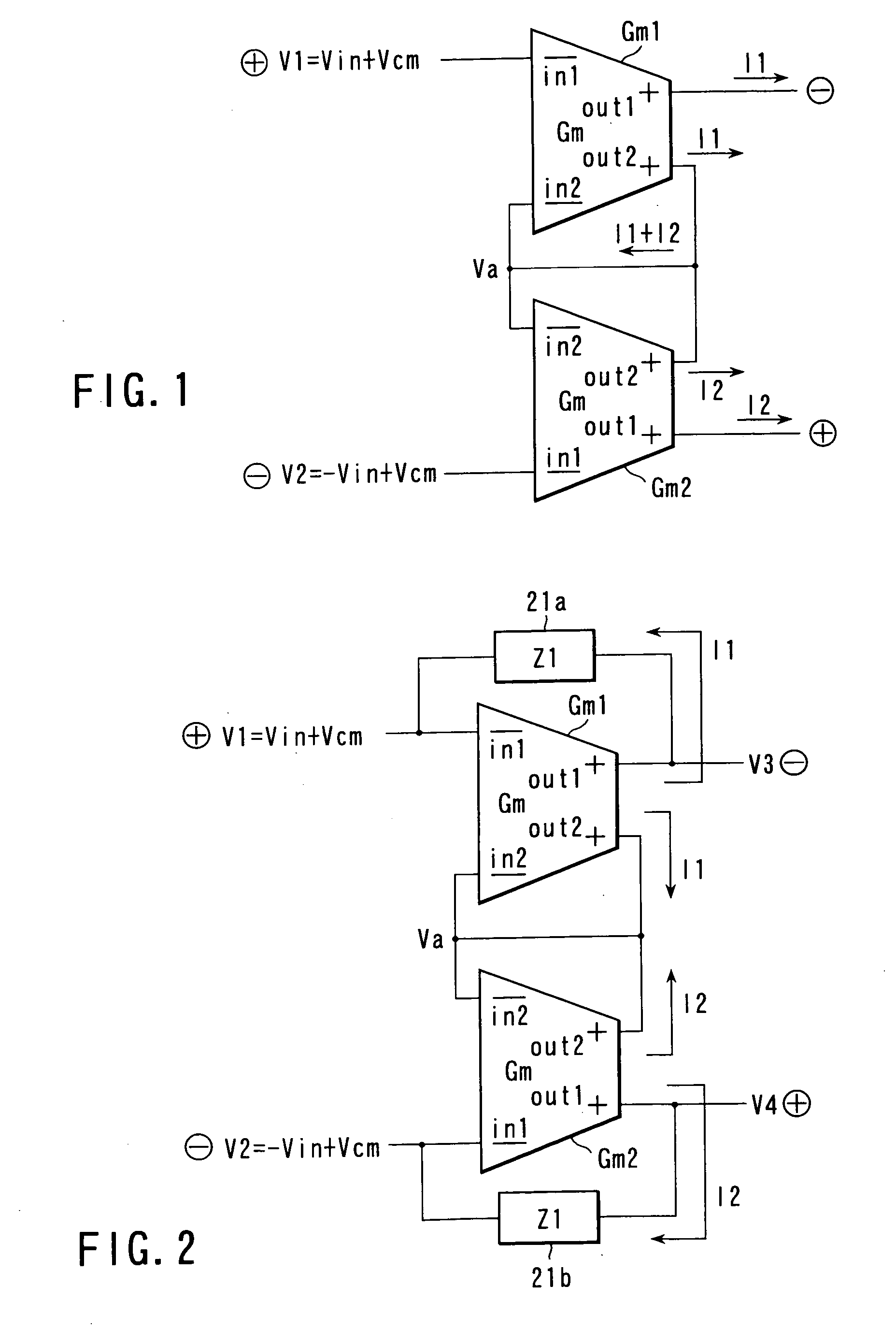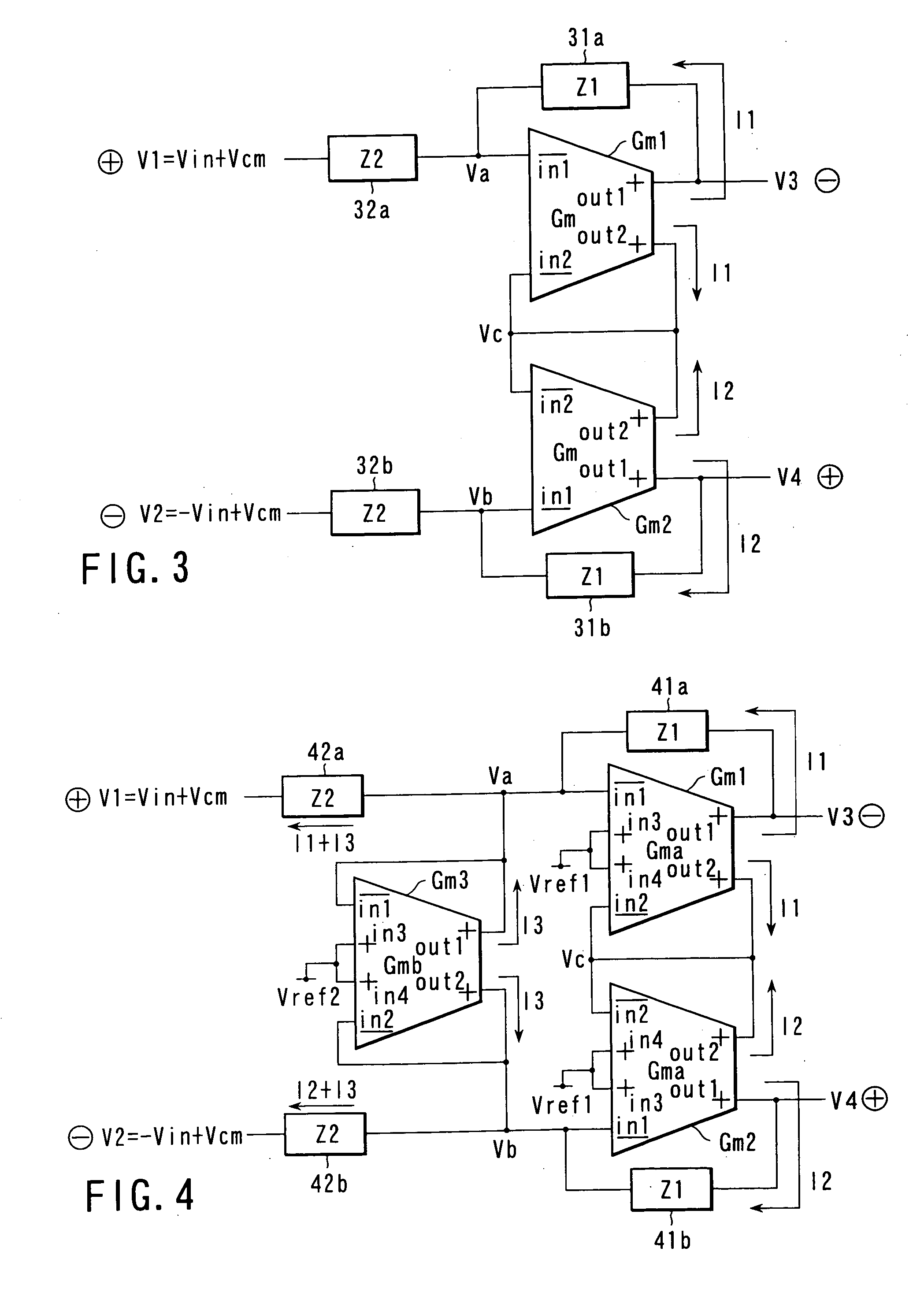Balanced amplifier and filter using the same
a technology applied in the field of balanced amplifier and filter, can solve the problems of differential pair not being able to exhibit sufficient performance, the maximum value of an output signal amplitude is too small, and the number of cascaded transistors which are stacked is limited
- Summary
- Abstract
- Description
- Claims
- Application Information
AI Technical Summary
Problems solved by technology
Method used
Image
Examples
first embodiment
[0027] According to the present invention shown in FIG. 1, a balanced amplifier comprises voltage-to-current converters Gm1 and Gm2 each having four terminals, namely negative phase input terminals in1 and in2 and positive phase output terminals out1 and out2. The positive phase output terminal out2 and negative phase input terminal in2 of the voltage-to-current converter Gm1, and the positive phase output terminal out2 and negative phase input terminal in2 of the voltage-to-current converter Gm2 are commonly connected. Differential input signals are input from the negative phase input terminal in1 of the voltage-to-current converter Gm1 and the negative phase input terminal in1 of the voltage-to-current converter Gm2. Differential output signals are output from both the positive phase output terminal out1 of the voltage-to-current converter Gm1 and the positive phase output terminal out1 of the voltage-to-current converter Gm2.
[0028] The operations of the voltage-to-current convert...
second embodiment
[0059] FIG. 2 is a block diagram showing a balanced amplifier according to the second embodiment of the present invention. This balanced amplifier is a voltage-input / voltage-output balanced amplifier comprised of voltage-to-current converters Gm1 and Gm2 each having four terminals, namely negative phase input terminals in1 and in2 and positive phase output terminals out1 and out2, an impedance element 21a connected in parallel between the negative phase input terminal in1 and positive phase output terminal out1 of the voltage-to-current converter Gm1, and an impedance element 21b connected in parallel between the negative phase input terminal in1 and positive phase output terminal out1 of the voltage-to-current converter Gm2. The four terminals, i.e., negative phase input terminals in2 and positive phase output terminals out2 of the voltage-to-current converters Gm1 and Gm2 are connected to each other.
[0060] The operation of the balanced amplifier according to this embodiment will b...
third embodiment
[0067] FIG. 3 is a block diagram showing a balanced amplifier according to the third embodiment of the present invention. This balanced amplifier is a voltage-input / voltage-output balanced amplifier comprised of voltage-to-current converters Gm1 and Gm2 each having four terminals, namely negative phase input terminals in1 and in2 and positive phase output terminals out1 and out2, an impedance element 31a connected in parallel between the negative phase input terminal in1 and positive phase output terminal out1 of the voltage-to-current converter Gm1, an impedance element 31b connected in parallel between the negative phase input terminal in1 and positive phase output terminal out1 of the voltage-to-current converter Gm2, an impedance element 32a having one terminal connected to the negative phase input terminal in1 of the voltage-to-current converter Gm1, and an impedance element 32b having one terminal connected to the negative phase input terminal in1 of the voltage-to-current con...
PUM
 Login to View More
Login to View More Abstract
Description
Claims
Application Information
 Login to View More
Login to View More - R&D
- Intellectual Property
- Life Sciences
- Materials
- Tech Scout
- Unparalleled Data Quality
- Higher Quality Content
- 60% Fewer Hallucinations
Browse by: Latest US Patents, China's latest patents, Technical Efficacy Thesaurus, Application Domain, Technology Topic, Popular Technical Reports.
© 2025 PatSnap. All rights reserved.Legal|Privacy policy|Modern Slavery Act Transparency Statement|Sitemap|About US| Contact US: help@patsnap.com



